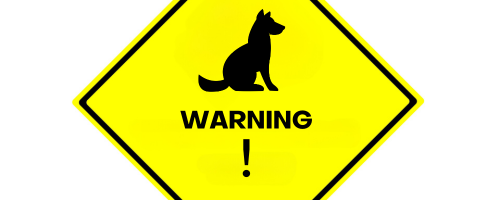Dealing with dangerous dogs: How to protect yourself in a dog attack
Dog attacks are rare, despite a recent increase in the number of reported cases.
However, if a dog attacked you, it’s likely to have traumatic and severe consequences. In the United Kingdom, the Dangerous Dogs Act 1991 plays a crucial role in addressing the issue.
This type of dog attack happens for several reasons. Including poor training, neglect, or certain breeds’ predisposition.
Dog attacks need swift action and proper documentation. Reporting incidents and gathering evidence is essential.
The Dangerous Dogs Act
The Dangerous Dogs Act is a legislative framework to regulate specific breeds of dogs. These dogs are more likely to show aggressive behaviour or pose a threat to the public.
Owners of banned breeds must follow strict regulations. Including keeping their dogs muzzled and leashed in public places. Owners must have adequate liability insurance and have microchipped and neutered their pets.
Failure to follow these requirements can result in penalties. Such as fines, imprisonment, or even confiscation and euthanasia of the dog.
The act extends to all dog owners, irrespective of breed, by emphasising the importance of responsible ownership.
There is strict liability under the Animals Act 1971. The Act states that if it can be shown the dog is “a dangerous species” insofar as it is “regarded as ferae naturae or that its vicious or mischievous propensities are known or presumed to be known”.
Otherwise “Where damage is caused by an animal which does not belong to a dangerous species, a keeper of the animal is liable for the damage.”
According to the Act if the damage is the type that the animal would likely cause if it were not restrained, or if the animal caused the damage, it would likely be severe.
Furthermore, the likelihood of such damage or its severity is attributed to characteristics of the animal that are not typically found in other animals of the same species or are only found in specific situations or circumstances.
Additionally, these characteristics were known by the owner of the animal or by someone who had control over the animal as a servant of the owner.
What to do in a dog attack:
- Try to stay calm.
- Protect yourself: Shield vital areas, such as your face and neck.
- Create distance: Back away slowly and avoid turning your back on the dog.
- Use objects as barriers or distractions: Find something to put between you and the dog, like a bag or a stick.
- Try to get help from anyone nearby.
Seek immediate medical attention:
- Assess your injuries and get medical care if needed.
- Call 999 if seriously injured.
Gather Evidence:
- Can you take photos or a video? Document your injuries, the scene, and any visible evidence.
- Request information about the dog’s breed.
- Get a description of the owner. Take note of their appearance and any distinguishing features.
- Collect contact details and the owner’s insurance information, if possible.
- Gather witnesses. Record the names and contact information of any witnesses who could support your case.
Report the incident to the police:
- Provide accurate details about the attack, location, and description of the dog.
- Cooperate with the police and follow their instructions.
DOG ATTACK – NV LEGAL CASE STUDIES
Some of our clients have unfortunately sustained injuries from a dog attack. These are a few examples.
- A dog attacked our client on horseback causing the horse to rear up and throw her. She sustained nasty injuries including a fractured wrist, bruising to the nose and eye, and a chipped tooth. Liability was denied and the matter went all the way to trial where we were successful on a 100% basis.
- Our client was in her back garden when the neighbour’s dog came through a hole in a damaged adjoining fence. It attacked her causing serious lacerations. The dog was a Japanese Akita owned by the tenant. We were able to secure damages from the tenant’s landlord on the basis that he knew or ought to have known about the hole in the fence. He should not have allowed the tenant to keep an animal as per the terms of the tenancy.
- Our client was leaving a shop when a dog on a lead held by someone, who did not own the dog, jumped up and attacked her. She had significant bite injuries to her elbow. We are presently proceeding against the person who had the dog at the time and the owner.
- A dog attacked our client without provocation. It was a relative’s dog, a large rescue cross-breed from a foreign country causing serious facial injuries.
NV LEGAL
If you have been injured or involved in a dog attack, contact us for FREE legal advice. CONTACT US HERE
NV Legal has a specialist team of solicitors who are experts in relation to animal attacks. If you or someone you know has questions about these issues, contact us for free legal advice.
Advice is from qualified solicitors, regulated by the Solicitors Regulation Authority.
Call – 03308 281 586
Email – info@nvlegal.co.uk
Website – www.nvlegal.co.uk
Find us on social media – Facebook LinkedIn
USEFUL LINKS
The deadliest industry to work in


